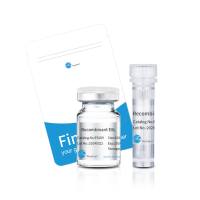Quantitative Measurement of mRNA Using the RNase Protection Assay
互联网
互联网
相关产品推荐

Recombinant-Saccharomyces-cerevisiae-Cytochrome-b-mRNA-maturase-bI2bI2Cytochrome b mRNA maturase bI2
¥12544

Recombinant Rat RNASE2/大鼠RNASE2蛋白
¥3150

SARS-CoV-2 (2019-nCoV) Nucleocapsid/N Antibody Titer Assay Kit | SARS-CoV-2 (2019-nCoV) Nucleocapsid/N Antibody Titer Assay Kit
¥5000

Recombinant-Coccidioides-immitis-Assembly-factor-CBP4CBP4Assembly factor CBP4 Alternative name(s): Cytochrome b mRNA-processing protein 4
¥9772

Recombinant-Sclerotinia-sclerotiorum-Assembly-factor-cbp4cbp4Assembly factor cbp4 Alternative name(s): Cytochrome b mRNA-processing protein 4
¥9898
相关问答

